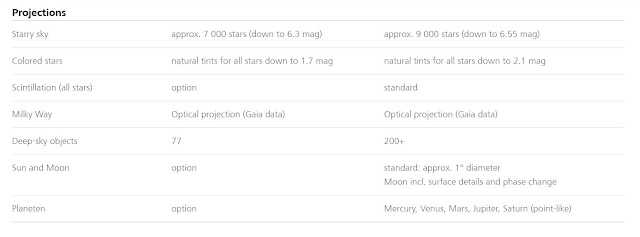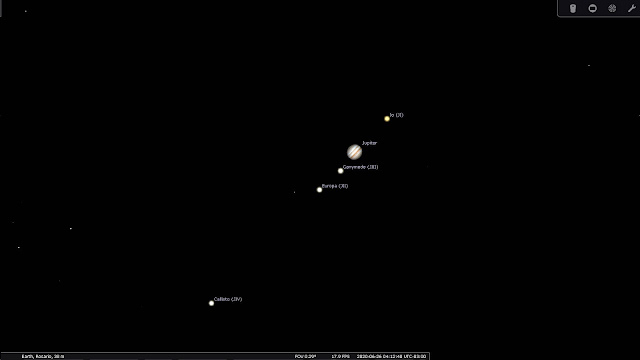I like astronomy, archaeology, photography, music and drinking a lot of tea. I hate politics. Something that annoys me: that I shall not respect the permanence, and to take me by what I'm not. The best sign: VIRGO. The worst: the health. The best: adapt and know how to get ahead. FIRST BLOG: esplaobs.blogspot.com, SECOND BLOG: esplaobs02.blogspot.com, RETRO BLOG: esplaobs01.blogspot.com, YOUTUBE CHANNELS: esplaobs, esplaobs. ext02. Instagram: esplaobsrosario. Welcome to my BLOGs !
Tuesday, June 30, 2020
Sunday, June 28, 2020
ZEISS ASTERION //// THE NEW STAR BALL FOR ZEISS HYBRID PLANETARIUMS
Today we would have presented ASTERION, our newest planetarium projector to the planetarium world at the IPS conference in the Edmonton Queen Elisabeth Planetarium. After the cancellation of the conference and considering the worldwide restrictions due to the Corona Pandemic, we want to present the projector virtually now.
ZEISS ASTERION is designed as a hybrid component in combination with a digital fulldome system, preferably featuring ZEISS VELVET projectors (True Black Hybrid). ASTERION simulates the natural night sky with all stars visible to the unaided eye including Milky Way and deep sky objects. The Milky Way is based on the latest Gaia data. The ASTERION Star Ball is the smallest now available and provides what we believe is the brightest star field under a dome between 8 m and 18 m (26 and 59 ft) in diameter.
ASTERION puts high opto-mechanical technology into a miniaturized form. It offers virtually no obstruction to the visitors. It is content with the footprint of one to two seats in the center of the dome. What is often considered the best space in the dome is kept for visitors.
The Star Ball lets presenters move between locations and time as quick as no other Star Ball can do.
With just 300 watts ASTERION won’t be found on the electric bill. ASTERION wants to be looked after but will not devour any service budget. No consumables anymore to buy, exchange and waste.
Best quality at a good price. Do not expect anything less from ASTERION.
ASTERION®
ZEISS unveils new planetarium projector
The all-new ZEISS ASTERION is an optomechanical component designed to be used with a digital fulldome system.
ZEISS is launching a new planetarium projector. The all-new ZEISS ASTERION is an optomechanical component designed to be used with a digital fulldome system. The projector features a new design with a Star Ball of the size of a medicine ball. It is the world's smallest and is suitable for use in planetariums with small and medium-sized domes (with a diameter from 8 m to 18 m) – and it generates the brightest night sky yet.
Even in the digital age, it is only possible to recreate a realistic night sky using an optomechanical projector. ZEISS ASTERION creates stars that are bright and clear, appearing as set points and in their natural brightness graduation. It can also project a very realistic Milky Way utilizing the latest Gaia data. And it does all this in a quality that no digital projector can match. The projector is controlled together and in sync with UNIVIEW, the digital representations of the sky. This allows the analog star projection and the constellation figures and astronomical coordinates that digitally fade in to blend with one another.
ASTERION is designed as an opto-mechanical hybrid component and shines with exactly what digital projections cannot: with stars, clear and bright, point-like and in natural gradation with a Milky Way that is particularly realistic to the eye.
ZEISS ASTERION
ASTERION is designed as an opto-mechanical hybrid component and shines with exactly what digital projections cannot: with stars, clear and bright, point-like and in natural gradation with a Milky Way that is particularly realistic to the eye.
“These days, planetariums that want to continue inspiring their visitors are looking for a projector that is incredibly small yet still capable of generating very bright stars, and is economical,” says Martin Kraus, Head of ZEISS Planetariums. So, ZEISS needed to miniaturize its high-tech optics. Planetariums won't just appreciate how much space this projector saves. ZEISS ASTERION consumes less energy (just 300 watts) than any other planetarium projector in the world. Long-lasting LED light sources mean you'll never need to replace projector bulbs!
In the digital age, no modern planetarium can do without a fulldome system. For many planetariums, however, this means having to forego an inspiring night sky, the kind you’ll almost only see high up in the mountains on a clear night, far from any and all distractions. According to Mr. Kraus, tiny, bright points of light like the stars against a pitch-dark sky have placed great demands on digital technology for the foreseeable.
Cutting-edge technologies like computer-assisted simulations and generative production processes such as adaptive manufacturing allow ZEISS to offer a miniaturized optomechanical planetarium projector that meets all the demands of the digital age. “We are confident that the projector will pique the curiosity of both our customers and the visitors that experience its power in the planetarium,” says Mr. Kraus.
Saturday, June 27, 2020
Friday, June 26, 2020
" VX ANDROMEDAE STAR " ( ESTRELLA DE CARBONO ) DESDE ROSARIO - ARGENTINA //// INFO: LICENCIADO EN FÍSICA JOSÉ LUIS LOMÁSCOLO - FOTOS: ESMERALDA SOSA
.. 6am ..
VX Andromedae - HD 1546 - HIP 1593
Magnitud: 7.5 - 9.7
Diámetro = 400 veces el diámetro del Sol
Luminosidad = 4800 veces la del Sol
Temperatura superficial = 2520 Kelvin
PARA VER FOTOS EN HD ABRIR SIGUIENTE LINK
" NIGHT OF THE PLANETS " DESDE ROSARIO - ARGENTINA //// FOTOS: ESMERALDA SOSA
... durante TODA la MADRUGADA ...
PARA VER FOTOS EN HD ABRIR SIGUIENTE LINK
" REGULUS & MOON " DESDE ROSARIO - ARGENTINA //// FOTOS: ESMERALDA SOSA
.. 8.30pm ..
PARA VER FOTOS EN HD ABRIR SIGUIENTE LINK
Subscribe to:
Posts (Atom)
















































